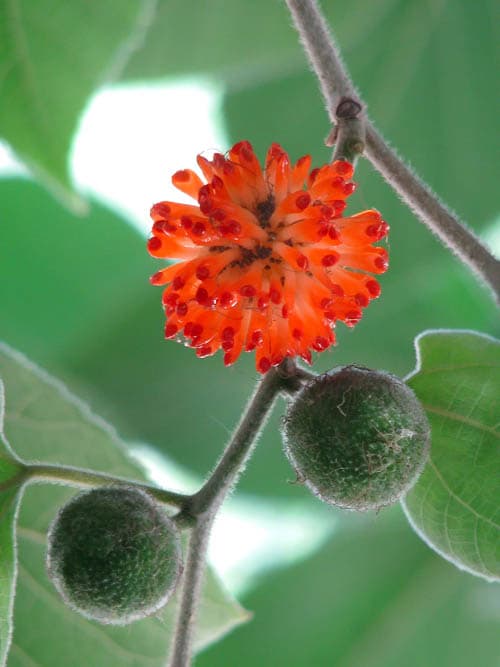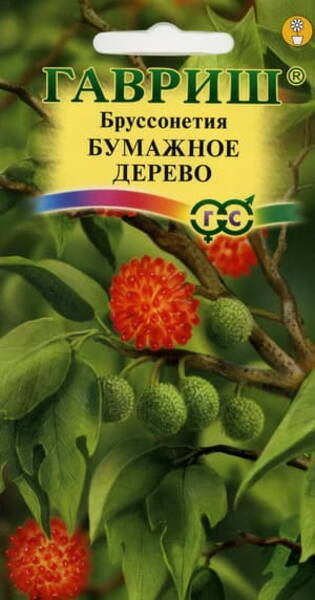Your shopping cart is empty!
Harilik paberimooruspuu Broussonetia papyrifera
An amazing tropical plant. For almost 2000 years, high-quality paper, fabrics, fishing tackle, and ropes have been made from its fibers. It develops quickly, and in natural conditions reaches a height of 12-15 m.
Inflorescences - "catkins" 4-7 cm long - develop on male specimens. Fruits are formed only on female specimens in the form of round, red fruitlets consisting of fleshy berries fused together. In nature, they are pecked by birds. The plant is kept in a sunny place. In hot summer months, abundant watering with warm water (30 °C) and regular fertilizing are desirable. In winter, watering is limited as much as possible, the plant is placed in a cool place and watered occasionally, preventing the soil from drying out. Small formative pruning is done at the end of winter during the dormant period.

Inflorescences - "catkins" 4-7 cm long - develop on male specimens. Fruits are formed only on female specimens in the form of round, red fruitlets consisting of fleshy berries fused together. In nature, they are pecked by birds. The plant is kept in a sunny place. In hot summer months, abundant watering with warm water (30 °C) and regular fertilizing are desirable. In winter, watering is limited as much as possible, the plant is placed in a cool place and watered occasionally, preventing the soil from drying out. Small formative pruning is done at the end of winter during the dormant period.

Eng.: Paper Mulberry. Suom.: Paperimulperipuu. Sven.: Pappersmullbärsträd.











